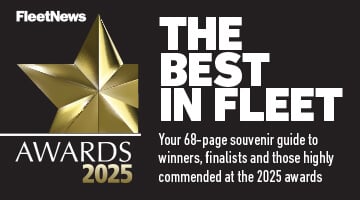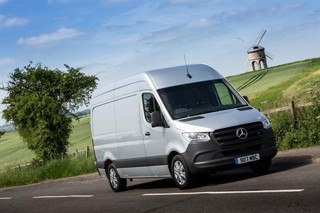Tuffnells has received the first 35 new-generation Sprinters to its van fleet, replacing older Sprinter models.
The courier’s fleet is composed entirely of vehicles from the Mercedes-Benz range.
Reflecting the company’s requirements to carry freight with irregular dimensions and weight, the latest 316 CDI additions to the line-up have extra-long L4 bodies, as well as H2 high roofs.
Roanza Truck & Van supplied the vehicles, while Stockport-based specialist VCL is installing the operator’s bespoke, half-length bulkheads, and these, coupled with the fact that the vans do not have passenger seats, allow consignments up to six metres in length to be carried.
VCL is also fitting uprated security locks, while RS Connect, of Birmingham, adds a full complement of safety cameras covering all four sides of the vehicle.
Roanza Truck & Van also supplied Tuffnells last year with 35 new trucks, the majority of them 7.5-tonne Atego models
Tuffnells operates more than 100 Sprinter vans across its network of 36 depots. The vehicles will be maintained at the most conveniently located Mercedes-Benz workshops under ServiceCare Complete Plans arranged by Roanza.
Simon Parsons, services director at Tuffnells’ parent company Connect Group PLC, said: “The Sprinter’s specification, particularly in terms of safety and technology, makes it ideally suited to our operations. I’ve every confidence that these impressive new vans will allow us to continue providing our customers with a great combination of choice and service.”
Key to the appeal for Tuffnells of the third-generation Sprinter range launched last year is its 4G internet connectivity. Mercedes PRO Connect provides operators with a range of fast, efficient and cost-effective vehicle management service packages. These allow vehicle data to be analysed in real time – everything from fuel consumption to vehicle locations, trip history, maintenance status and driver behaviour can be monitored.
“Mercedes PRO connect promises to be a highly effective new tool in helping us to manage the fleet efficiently and reduce our operating costs,” added Parsons. “Its introduction means decisions will be data-driven, so based on hard factual information relayed directly from the vehicles.”




















Login to comment
Comments
No comments have been made yet.